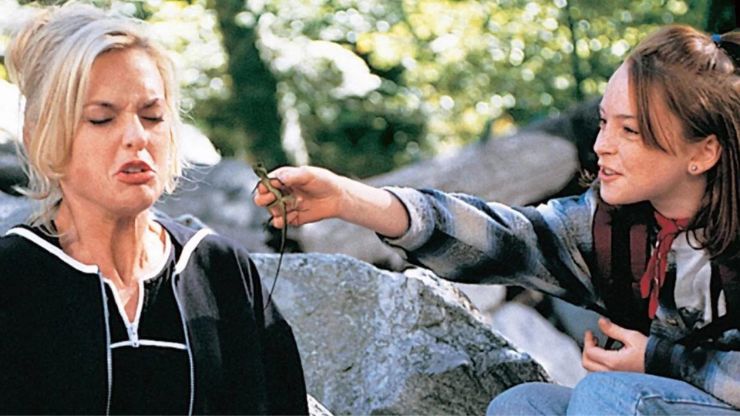Movie Remakes That are Better Than the Original – Movie remakes often provoke skepticism and comparison to their original counterparts. However, amidst the sea of reimaginings, there exist gems that not only honor their predecessors but also surpass them in quality and impact. In this exploration, we delve into a curated selection of movie remakes that have defied expectations, offering a fresh perspective and revitalizing timeless stories for new generations.
Each of these remakes has not merely replicated the source material but has reinterpreted it, bringing innovative storytelling techniques, modern sensibilities, and often superior craftsmanship to the screen. Through meticulous analysis, we will uncover the elements that elevate these remakes above their predecessors, from enhanced performances to updated special effects and nuanced storytelling.
By examining these examples, we gain insight into the transformative power of reinterpretation in cinema and the enduring relevance of classic narratives in an ever-evolving cultural landscape. Join us on a journey through cinematic history as we celebrate the movie remakes that have dared to surpass the originals.
Table of Contents
ToggleMovie Remakes That are Better Than the Original
“The Departed” (2006)
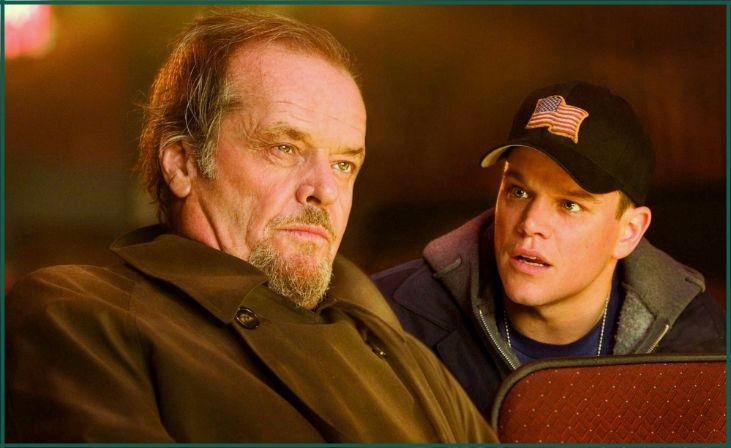
Martin Scorsese’s adaptation of the Hong Kong crime thriller “Infernal Affairs” took the original’s gripping story of undercover cops and ruthless gangsters and transported it to the streets of Boston. With an ensemble cast including Leonardo DiCaprio, Matt Damon, and Jack Nicholson, “The Departed” weaves a complex narrative of deception, loyalty, and betrayal. Scorsese’s direction infuses the film with tension and intensity, earning it critical acclaim and four Academy Awards, including Best Picture and Best Director. The stellar performances, particularly from DiCaprio and Damon, along with its sharp dialogue and relentless pacing, solidified “The Departed” as one of the most acclaimed crime dramas of the 21st century.
Also, Read – Best Romantic Comedies of All Time
“The Thing” (1982)
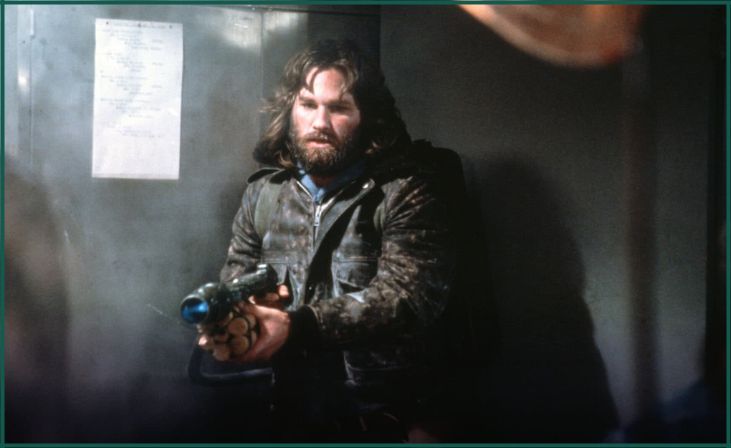
John Carpenter’s reimagining of the 1951 sci-fi classic “The Thing from Another World” is a masterclass in suspense and practical effects. Set in a remote Antarctic research station, the film follows a group of scientists who encounter a shape-shifting alien organism that infiltrates their ranks. Carpenter’s version delves deeper into paranoia and mistrust among the characters, heightening the psychological horror. The groundbreaking special effects, including grotesque creature designs by Rob Bottin, still hold up today, adding to the film’s visceral impact. “The Thing” is celebrated for its eerie atmosphere, claustrophobic tension, and ambiguous ending, cementing its status as a cult classic in the horror genre.
“Ocean’s Eleven” (2001)

Steven Soderbergh’s slick and stylish remake of the 1960 Rat Pack film breathes new life into the heist genre. Led by George Clooney as the charismatic Danny Ocean, a team of con artists and thieves plot to rob three Las Vegas casinos simultaneously. Soderbergh infuses the film with his trademark visual flair and narrative flair, creating a thrilling and entertaining caper filled with witty banter and clever plot twists. The ensemble cast, including Brad Pitt, Julia Roberts, and Matt Damon, exudes charm and chemistry, elevating the film beyond its genre trappings. “Ocean’s Eleven” revitalized the heist movie for a new generation, spawning two successful sequels and influencing countless imitators.
Don't just scroll, subscribe!
BuzzTrail's unique web-stories are the cure for boredom you've been waiting for.
“True Grit” (2010)
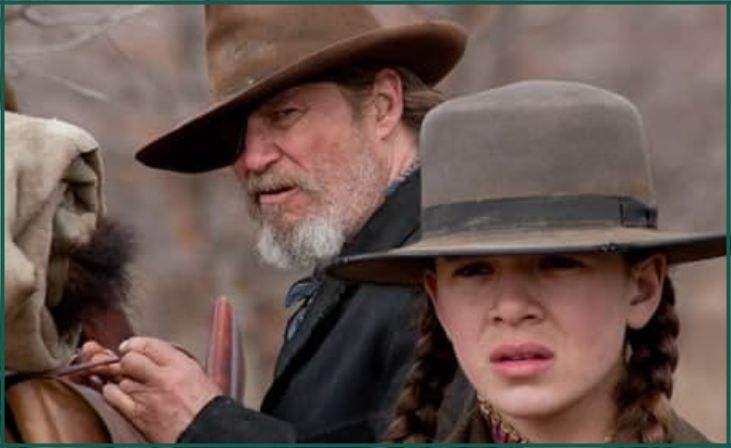
The Coen Brothers’ adaptation of Charles Portis’ novel offers a fresh take on the classic Western, retaining the source material’s gritty authenticity while injecting their trademark wit and visual flair. Set in the rugged frontier of the 19th century American West, the film follows Mattie Ross, a determined young girl seeking justice for her father’s murder with the help of a grizzled U.S. Marshal, Rooster Cogburn, and a Texas Ranger named LaBoeuf. Hailee Steinfeld delivers a breakout performance as the headstrong Mattie, holding her own alongside seasoned actors Jeff Bridges and Matt Damon. The Coens’ keen eye for detail and evocative cinematography capture the harsh beauty of the Western landscape, while their sharp script balances moments of humor with poignant moments of drama. “True Grit” stands as a testament to the Coens’ mastery of genre filmmaking and their ability to breathe new life into familiar stories.
Also, Read – Best Hollywood Films of the Nineties
“Scarface” (1983)
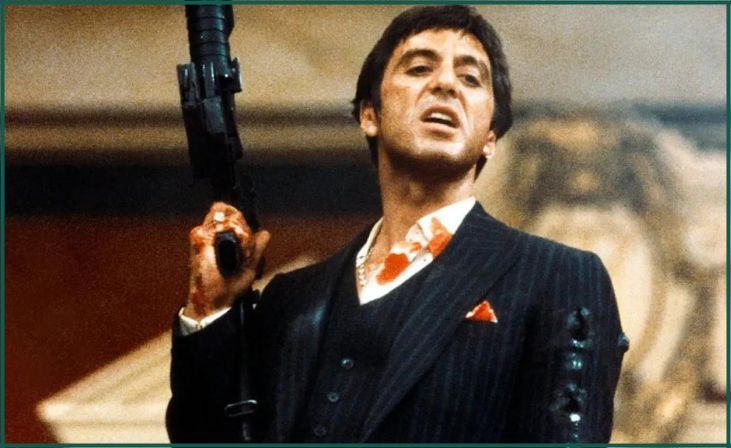
Brian De Palma’s audacious reimagining of Howard Hawks’ 1932 gangster film transplants the action from Prohibition-era Chicago to 1980s Miami, delivering a visceral and unapologetically violent portrait of the American Dream gone sour. Al Pacino delivers a tour de force performance as Tony Montana, a Cuban immigrant who rises to power in the Miami drug trade through ruthless ambition and sheer brutality. De Palma’s kinetic direction, coupled with Oliver Stone’s incisive screenplay, explores themes of greed, corruption, and the allure of power. “Scarface” courted controversy upon its release for its graphic violence and profanity but has since attained cult status for its iconic dialogue, memorable characters, and operatic storytelling. Its influence can be felt in countless films and TV shows that have followed, cementing its status as a modern classic of the crime genre.
“The Fly” (1986)

David Cronenberg’s body horror masterpiece reinvents the 1958 B-movie of the same name with a potent blend of visceral gore, psychological terror, and tragic romance. Jeff Goldblum stars as Seth Brundle, a brilliant but eccentric scientist who unwittingly merges his DNA with that of a housefly during a teleportation experiment. As Brundle slowly transforms into a grotesque hybrid creature, his relationship with journalist Veronica Quaife, played by Geena Davis, becomes increasingly fraught with horror and heartbreak. Cronenberg’s meticulous attention to practical effects and makeup creates some of the most visceral and stomach-churning body horror sequences ever put to film, while his exploration of themes such as identity, mortality, and the hubris of scientific ambition lends the film a deeper resonance. “The Fly” remains a benchmark of the genre and a testament to Cronenberg’s singular vision and uncompromising craftsmanship.
“The Maltese Falcon” (1941)
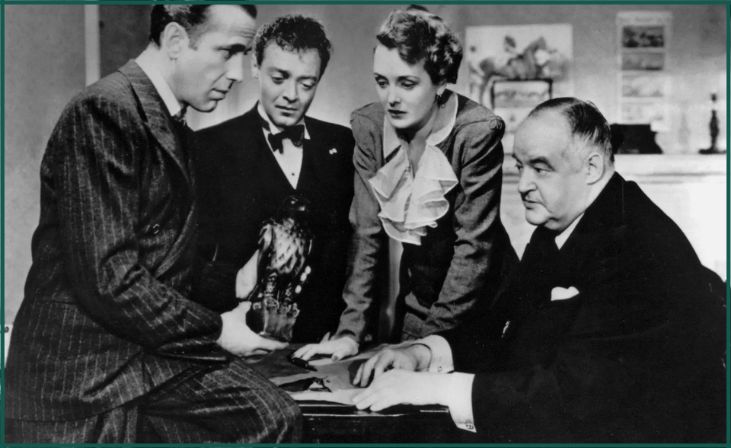
John Huston’s directorial debut is a faithful adaptation of Dashiell Hammett’s seminal detective novel, elevating the hardboiled crime genre to new heights of sophistication and style. Humphrey Bogart delivers an iconic performance as private investigator Sam Spade, who becomes embroiled in a web of intrigue and deceit surrounding the search for a priceless statuette known as the Maltese Falcon. Huston’s sharp direction, coupled with a tight script and atmospheric cinematography, captures the gritty allure of 1940s San Francisco and the moral ambiguity of its inhabitants. Bogart’s portrayal of Spade as a cynical and morally ambiguous antihero set the template for countless film noir protagonists to come, while the film’s labyrinthine plot and memorable supporting characters have made it a perennial favorite among cinephiles and mystery enthusiasts alike.
“Invasion of the Body Snatchers” (1978)
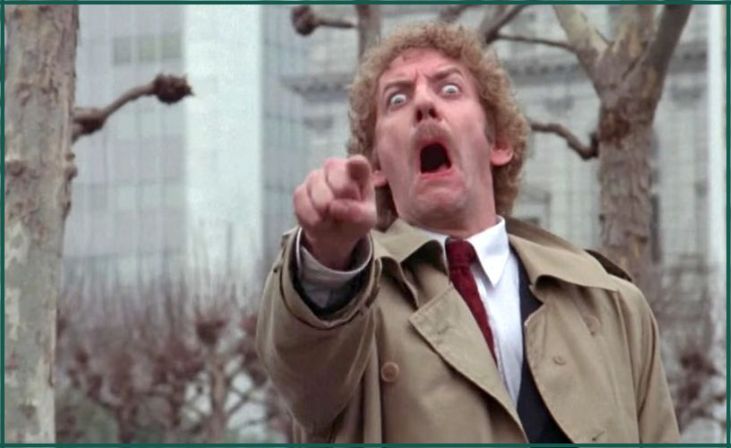
Philip Kaufman’s chilling reimagining of the 1956 sci-fi classic updates the original’s Cold War paranoia for the tumultuous political climate of the late 1970s. Set in the idyllic town of San Francisco, the film follows health inspector Matthew Bennell, played by Donald Sutherland, as he uncovers a sinister alien conspiracy to replace humanity with emotionless duplicates grown from alien pods. Kaufman’s direction infuses the film with a palpable sense of dread and paranoia, underscored by a haunting score and evocative cinematography. The film’s themes of conformity, identity, and the erosion of individuality struck a chord with audiences during its release and have continued to resonate in the decades since. With its taut pacing, atmospheric tension, and thought-provoking subtext, “Invasion of the Body Snatchers” remains a standout example of intelligent and socially relevant science fiction filmmaking.
Conclusion
In revisiting these remakes, it becomes evident that while staying true to the essence of the originals, they have expanded upon them, offering fresh perspectives and innovations that resonate with audiences. These films stand as testaments to the creative potential of reinterpretation in cinema, showcasing how the reimagination of familiar stories can breathe new life into beloved narratives. As we reflect on their achievements, we recognize the enduring appeal of these reimagined films and the significant contributions they have made to the cinematic landscape.
FAQs
What defines a remake as “better” than the original?
What defines a remake as “better” than the original?
A remake is considered “better” than the original when it surpasses it in terms of critical acclaim, audience reception, technological advancements, performances, storytelling, or cultural impact.
How common are movie remakes that outshine the original?
How common are movie remakes that outshine the original?
While rare, movie remakes that are considered superior to the original do exist. They often involve innovative filmmakers bringing fresh perspectives or modern techniques to classic stories.

